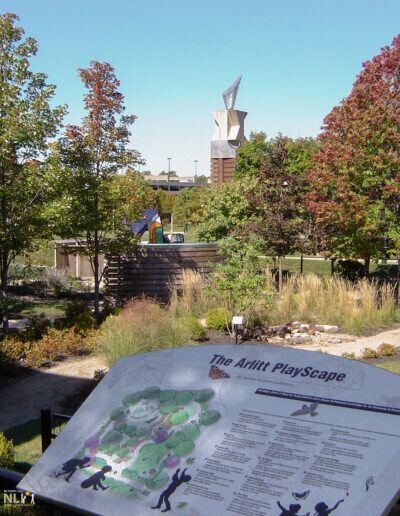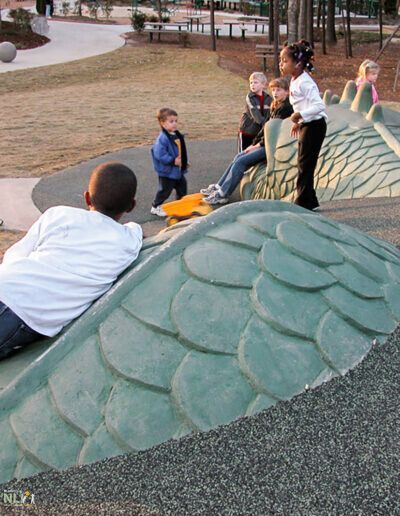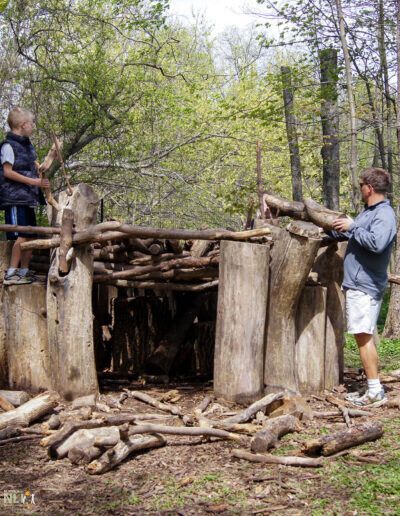Publications
LET’S GET OUTSIDE! The Case for Young Children
Reduce risk of disease and improve health during COVID-19—and beyond
Authors: Natural Learning Initiative & National Wildlife Federation
During the pandemic, all involved in the care of young children (birth to age seven) are searching for evidence-based, innovative strategies for adapting daily activities, while reducing the risk of COVID-19. One high-potential strategy is to move activities with children outside, where COVID-19 risk can be substantially less and the health benefits of interacting with nature are greatly increased. The pandemic adds massive emphasis to the importance of children spending regular, substantial time outside as a health-promotion strategy, to reduce risk of transmission and improve long-term health and wellness.
Why Outside?
Risk of COVID-19 transmission is reduced in the outdoors. While time outdoors does not completely eliminate risk of COVID-19 transmission, experts agree that the more time children and accompanying adults spend outside, the lower the risk. Outdoors, airborne viruses are more quickly dispersed by air currents and are rapidly diluted compared to indoors, where people are more confined. Infectious disease researchers have also discovered that exposure to ultraviolet radiation in sunlight inactivates the coronavirus rapidly, both in the air and on surfaces. Given these facts, the American Academy of Pediatrics (AAP) asserts that “Outdoor transmission is known to be much lower than indoor transmission.” Centers for Disease Control and Prevention (CDC) COVID-19 guidance for children, states that “indoor spaces are more risky than outdoor spaces.” The AAP further advises that “utilizing outdoor spaces” is one of the high-priority strategies for reducing the spread of COVID-19 in pre-kindergarten settings.
Decades of research show that spending time outdoors supports healthy child development. Physical activity increases when children are outside, reducing the risk of obesity, as does hands-on gardening, which motivates healthy eating. Time spent interacting with nature can boost the immune system, reducing potential risk of allergies and asthma. Children’s mental health also benefits from regular time outside, including reduced stress, more positive social behaviors, increased cooperation, and reduced ADHD symptoms. For more evidence supporting time outside for young children, see Benefits of Engaging Children with Nature and a related Research Brief.
Regular access to the outdoors is a human right. All young children need the daily benefits of safe, healthy time outside. Daily interaction with nature must be considered a child’s basic human right. However, even before the pandemic, access to quality outdoor spaces was not universal, with social inequities intensifying barriers for many young children. There is agreement among public health advocates that access to the outdoors and nature for our children must be included in strategies to achieve health equity during and after COVID-19. And there is increasing recognition that access to quality outdoor settings is a critical component of the social and physical determinants of health. By seeking to improve and encourage daily use of the outdoor settings where young children spend time every day, parents, caregivers, teachers, and others may join together to support a powerful health equity strategy.
Disclaimer
The Natural Learning Initiative (NLI), NC State University, the National Wildlife Federation, their partners, and supporting entities assume no responsibility for consequences arising from physical interventions using information contained in this document. Under no circumstances will liability be assumed for any loss or damage, including without limitation, indirect or consequential, incurred during installation, management, and use of such interventions. Highly recommended is adherence to relevant local, state, and national regulatory requirements concerning but not limited to health and safety, accessibility, licensing, and program regulation.
¹ This document is one of a series produced by the National Wildlife Federation’s Early Childhood Health Outdoors (ECHO) program and North Carolina State University’s Natural Learning Initiative (NLI). It presents the case for outside time as a broad strategy for reducing risk of COVID-19 spread for children and accompanying adults, and links the reader to documents in the series for child care providers and regulators.
Campus-based child care outdoor learning environments can add value to natural sites located at universities (Arlitt Nature Play- Scape), community colleges, office parks or business campuses.
Community parks can offer inclusive, universally designed, intergenerational nature-based, diverse settings for all visitors, including sculptural settings like this “dragon” (Kids Together Playground).
Taking Action
Based on the immediate and long-term health benefits of regular time outside, increasing time outdoors is a critical strategy to support the health of young children and the safety of caregivers. Additionally, given the role that child care plays in supporting working parents and economies, this strategy may also support the viability of child care businesses and assist with economic recovery. To facilitate action that may result in the improvement and greater use of outdoor spaces in the care of young children, below are several resources that highlight practical strategies and considerations:
- Child care providers can find practical strategies for managing and enhancing outdoor spaces while making them healthy, comfortable, and engaging for young children and caregivers.
- Child care regulators and policy-makers can find considerations to provide guidance to child care providers during and after COVID-19 to support the greater use of outdoor settings in child care.
- School stakeholders including administrators, teachers, parents, and planners can find resources for utilizing outdoor classrooms from Green Schoolyards America and find strategies to rethink outdoor education from the North American Association for Environmental Education.
- Parents, grandparents, and other allies for young Children can distribute this document to promote, educate, and advocate for extending time outside for young children as an immediate and long-term health strategy. All parents and caregivers can use Nature Play at Home to bring kids outside in yards and on balconies.
USING BEST PRACTICES TO REDUCE RISK
Given that time spent outdoors does not completely eliminate risk of COVID-19 transmission, caregivers, teachers, and parents implementing more time outside with young children should follow local and state health guidance and regulations, as well as prevailing recommendations from public health experts. The AAP guidance for schools (including preschools) and child care, as well as the CDC’s general guidance for children and considerations for child care settings, consistently recommend risk mitigation strategies, especially wearing masks, physical distancing, washing hands, and implementing disinfection protocols. Resources for child care providers and regulators provide detailed considerations that can inform greater use of the outdoors in concert with prevailing COVID-19 requirements and recommendations.
TAKE THE FIRST STEP… OUTSIDE
The evidence is clear. More time outside can support healthier development for young children and wellbeing for their caregivers, during COVID-19 and beyond. Enhancing outdoor spaces for young children to make them healthy, comfortable, and engaging is an accessible strategy that does not have to be costly. Resources highlighted in this document will help to make the case and facilitate action to encourage more time outside every day with young children.




